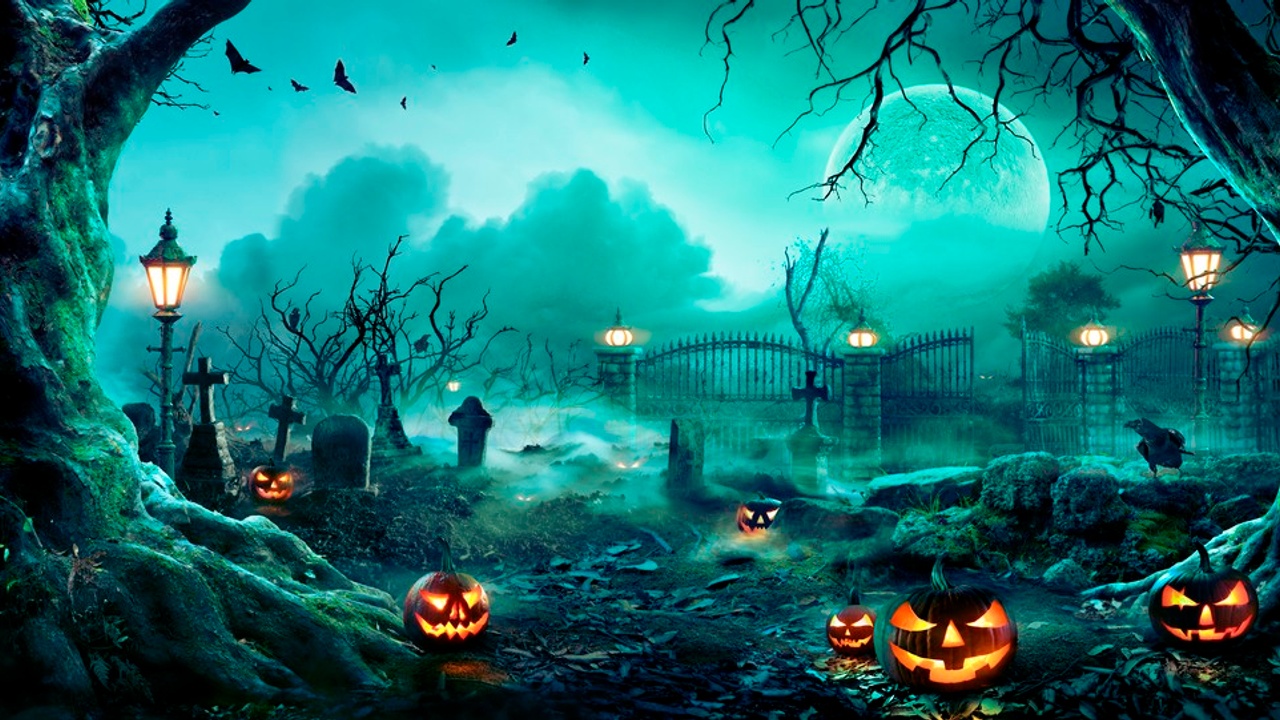
Talking is so much more than your content and really depends on the way you express the words you speak. I'm talking about melody today for storytelling, and in the spirit of Halloween, it's customary to tell scary stories. You'll be surprised how much you can scare your listeners by paying a little more attention to your pitch. Read on for more.
Exploring your intonation when storytelling.
The wooden floorboards creaked as she slowly fumbled her way to the end of the hall. The sound of the wind rattled through the house making the window panes vibrate. The scratchy static noise echoed throughout the house and she could hear it intensifying as she made her way to the door at the end of the hall. She cautiously pushed the door ajar, making out a pair of green eyes glaring back at her. That's when she felt it. Someone standing behind her...
Did you think I was going to tell you a scary story? Not quite – but Happy Halloween!
On October 31st people around the United States (and the world!) don their costumes and celebrate Halloween. This date is celebrated by dressing in costumes, attending parties, visiting haunted houses, sharing scary stories, and eating Halloween candy. Children, specifically, might spend the evening "trick-or-treating" or going door-to-door collecting candy from their neighbors.
You might ask how Halloween became so popular in the United States. Historians actually debate the origins of Halloween, arguing it has both pagan and religious roots and that it originated in the 5th century BC. The Gaelic harvest celebration known as Samhain marked the end of the growing season and the beginning of winter in Celtic England, Ireland, and Scotland. It was a tradition among the Celts to light bonfires and wear costumes to ward off ghosts as they believed that the barriers between the natural world and the supernatural world vanished on Samhain.
The holiday evolved and by the 8th century, the Catholic Church designated November 1st, the original date of Samhain, into a religious holiday called "All Saint's Day" or "All Hallows," making October 31st the date of "All Hallow's Eve" or what is now referred to as Halloween. All Saints Day was a time to honor all saints but also incorporated some of the traditions of Samhain.
From then on, the English Puritans brought the tradition of Halloween to the United States. These Puritans celebrated Samhain before traveling to their new country. And although Celtic traditions had been replaced by Christianity, many of the old practices that remained had begun to evolve.
In the mid-1800s, Irish immigrants came to the Untied States also bringing along their Halloween traditions. It was customary to dress up in costumes, ask neighbors for food and money, even pull pranks in the evening on Halloween.
Today we see how these traditions have evolved – people decorate their houses with spooky-themed props and decorations, candy companies release Halloween-themed candies, people exchange scary stories, and people dress up in all sorts of costumes and attend parties.
I'd thought for this blog post I'd highlight a few pointers you can keep in mind for a Halloween activity – telling scary stories. To be honest, I'm not much of a scary moviegoer, but in the US, we certainly have a lot of spooky tales to tell.
When it comes to telling your own scary story, thinking about the pitch of your voice will help you tell it well.
The key to setting the scene and telling a scary story is creating an eerie atmosphere of suspense to build tension among your crowd. When you think of the word eerie or scary...do you think your pitch should be high or low?
Yes! Low. The lower your voice, the better.
Another style you can adopt is if you want to scare your listeners into a jump out of fear, you can adopt a quiet, casual attitude as you're describing the scene right before a scare. The discord between building the tension but being casual about it and suddenly entering the climax of your tale will surprise listeners.
When you get to a scare or the climax of your story, raise the tension by raising the pitch of your voice and by increasing your speed. You can always try to have some fun as well and add special effects to your voice.
Are you trying to impersonate a character that is scared? Why not add an occasional quiver to your voice to impersonate that fear best?
Are you trying to show that you're anxious and scared too? Why not add the occasional gulp to your pauses to evoke your discomfort?
Ok, I'll leave you with these tips this Halloween. Don't forget to enjoy yourself and explore your creative freedom. I love melody when telling stories because there's really so much that you can evoke and create through the tone, pitch, and sound of your voice. Setting the atmosphere really tells half of the story!
For more tips on what to add to your scary story, check out this article here, and check out this Ted Talk on ghost stories!
Let's Stay Connected!
Subscribe to The English Communication Confidence Blog so that you can be the first to receive unique ways to polish your advanced English.
We hate SPAM. We will never sell your information, for any reason.




